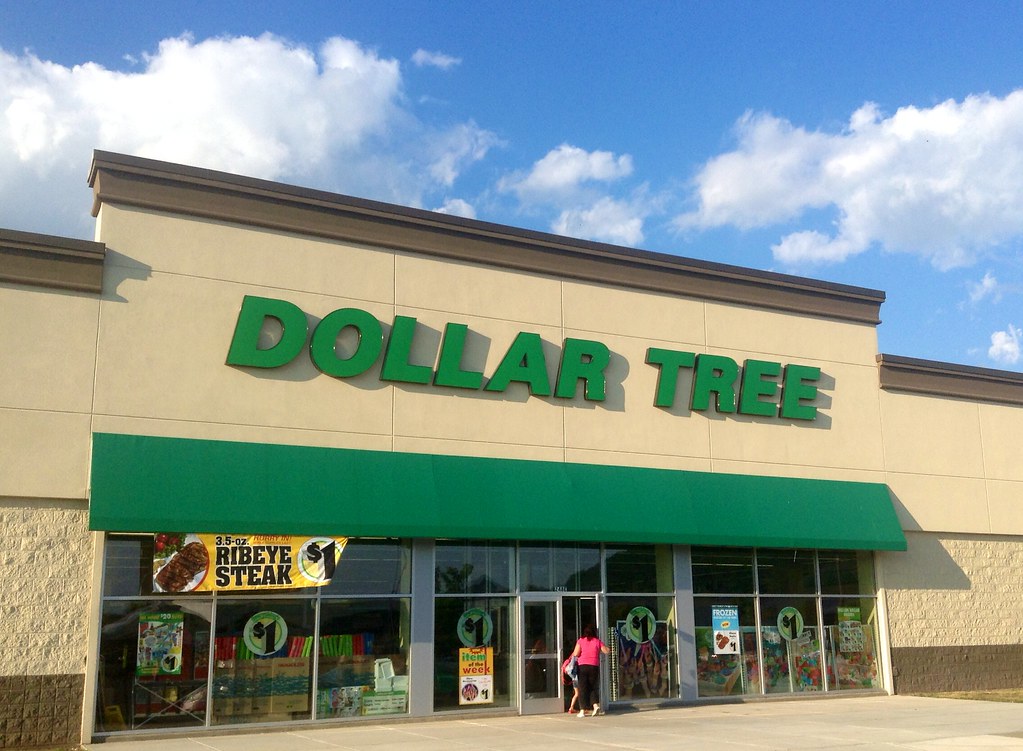About Dollar Tree
We previously wrote a stock analysis article on discount retailer Dollar General in the past, so we figured it would only be right if we performed an analysis on one of its main competitors, Dollar Tree.
Now, before we move ahead we want to make sure it’s clear that Dollar Tree is not just Dollar Tree. While Dollar Tree is in fact Dollar Tree, it is also the parent company of another prominent discount retailer, Family Dollar.
Also, while Dollar Tree used to entice consumers by selling everything in their stores for only one dollar, during this inflation-filled era the company has had to make some drastic changes, one of which involved increasing prices on their products from $1.00 to $1.25.
I think a name change is in order.
Whether or not the company’s executive team decides to change the name to “One dollar and twenty-five cents Tree,” the fact is that Dollar Tree is one of the few companies that tends to perform well when the economy is going through a recession and the consumer is strapped for cash.
Given the current state of the economy, you might find yourself shopping at your local Dollar Tree soon as many believe a recession is near.

Therefore, it might be an opportune time to consider picking up some shares in the company’s stock.
Let’s see if we’re right.
Dollar Tree’s stock financials
The company’s stock is currently trading at around $167 with a market capitalization of $37.3 billion and a price-to-earnings (P/E) ratio of 25.36, all while not currently paying a dividend to its shareholders.
While Dollar Tree’s stock appears slightly overvalued, we think many would be willing to pay a slight premium to invest in one of the few companies that is likely to gain from a greater overall financial downturn.
Regardless, barring the company’s valuation, let’s get a glimpse into the company’s core financials and see if Dollar Tree is as sound as we assume.
According to the company’s balance sheet, Dollar Tree’s executive team manages approximately $21.7 billion in total assets and just north of $14 billion in total liabilities.
If we weren’t considering the sector Dollar Tree operates in, we’d say this is a very average balance sheet, however being that the company competes in retail we think this is a great balance sheet.
As it relates to the company’s total revenue according to the income statement, it’s been fairly consistent over the past five years. Specifically, between 2018 and 2020 the company’s total annual revenue stood at around $22 billion and has incrementally risen in the years that followed, upwards of around $26 billion.
We think it’s safe to assume that irrespective of the state of the overall economy, Dollar Tree will continue to generate consistent revenue for years and decades to come, we just predict their revenue will be slightly higher than usual when consumers become less confident in the economy and aren’t willing or able to spend as much on Amazon or with Walmart, Target or other retailers.

Finally, onto Dollar Tree’s cash flow statement, the company saw a negative dip in net income in 2019 which was likely due to the initial shock of the COVID-19 pandemic. For all of its competitive advantages, the company isn’t as technologically savvy as some of its competitors such as Dollar General. For instance, Dollar General has a mobile app and a state-of-the-art pick up in-store function as well as partnerships with third-party delivery companies such as DoorDash, making it easier for consumers to make purchases digitally and remotely, which likely served to be an enormous benefit to Dollar General and somewhat of a temporary nightmare for Dollar Tree and its subsidiaries.
Given this information combined with the supply chain chaos that was starting to sting in 2019, it makes sense that Dollar Tree saw a short-lived negative net income.
Thankfully, that’s the only year (over the past five years) in which the company reported a negative net income.
Dollar Tree’s stock fundamentals
As we’ve discussed in previous articles, retail in general is cutthroat as the margins tend to be slim and it takes a lot of time and resources to get products moved from the factory to the distribution center, to the store and ultimately to the customer.
However, we feel assured knowing that Dollar Tree’s trailing twelve month (TTM) net profit margin is nearly identical to that of the industry average, especially since their prices are relatively low as is.
While we would’ve been deterred if the company’s annual net profit margin was much lower than the competition, we evidently don’t need to be concerned.

From a returns perspective, Dollar Tree’s TTM returns on assets and investment modestly lag behind the industry average, which isn’t great but definitely not the end of the world. Retailers just aren’t well known for generating higher than normal returns in these fields.
Should you buy Dollar Tree stock?
We think the best thing about this company is its recessionary-proof nature.
Even when the economy is doing well, there are still people who live at or near the poverty line who depend on companies such as Dollar Tree and Family Dollar to provide everyday necessities such as food, drink, groceries and other household products.
Additionally, the core numbers behind this company are decent and give us confidence that the company will continue providing for its main consumer base(s) while delivering shareholders solid long-term returns as well, even though the company’s stock is slightly overvalued as of this writing.
Given all of this information we give the company a “buy” rating.
DISCLAIMER: This analysis of the aforementioned stock security is in no way to be construed, understood, or seen as formal, professional, or any other form of investment advice. We are simply expressing our opinions regarding a publicly traded entity.